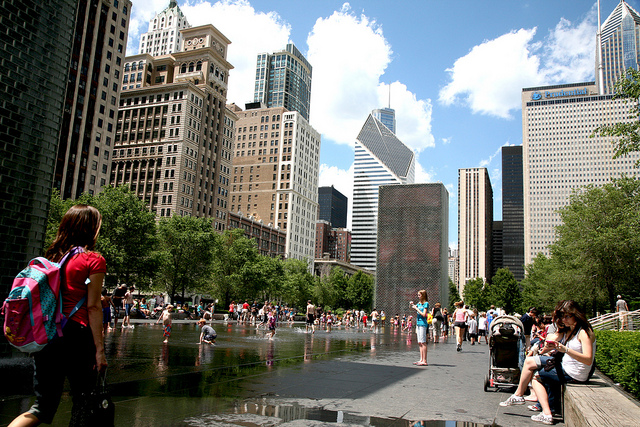Can Chicago’s Cultural Plan really deliver?
By Kelly Kleiman

Can Chicago’s Cultural Plan really deliver?
By Kelly Kleiman
The story behind the story of the much-discussed Chicago Cultural Plan is this: For the past ten years, at least since Richard Florida wrote his book The Rise of the Creative Class (reviewed here by a proto-Dueling Critic), cities and their governments have taken it on faith that the best way to create urban prosperity is to be hospitable to “the arts.” (The idea has to be taken on faith because it contains so many unexamined assumptions.) These days this cluster of wishes, dreams and guesses goes under the name of “vibrancy.”
Tom Frank of The Baffler recently wrote a piece disemboweling the concept, arguing that the arts flower as a result of vibrancy rather than as its cause. Frank’s critique produced a flood of counter-critiques and counter-counter critiques among critics and artists with too much time on our hands, and forced me to articulate my own view of “What’s Wrong With Cultural Plans?” My own claim is a bit more modest: I’m prepared to concede that “the arts” and artists may be the solution to some urban problems — just not the ones to which we should be paying the most attention.
If you want a community that’s cleaner and greener and brighter and whiter than the one you have now, artists can certainly serve as catalysts to that transformation. They are a very unusual species of poor people that attract rich people instead of repelling them. So if your goal is to remove regular poor people from your community, poor artists are just the thing. (And if black and brown people are being replaced by white people in the process, that’s just a coincidence, right?)
And if you want to make your community an attractive place for well-educated wealthy people to spend money, art galleries, theaters and the ancillary businesses they attract (coffee shops, restaurants) may well do the trick. At a certain point, these businesses will take off on their own, producing feet on the street day and night and enhancing public safety thereby. Some or all of this is what urban planners means by “vibrancy,” and it’s by no means a bad thing.
But if you want to solve the problems of the community that’s already there, fostering the arts is the long way ‘round. The direct method of reducing the number and misery of poor people is to concentrate on providing them with jobs and affordable housing. So if a city like Chicago decides instead to advocate “affordable live/work space for artists,” it’s trying to solve poverty on the cheap. Either it’s genuinely concerned with alleviating artists’ poverty, in which case it’s chosen to address the most easily solvable problem (“These poor people are educated; give them teaching jobs.”); or it’s interested only in slapping a layer of glittery paint on poverty in general (“These poor people are educated; see, poverty is a choice.”) Either way, it’s an approach unworthy of the “world-class city” we’re always claiming we plan to be.
If the Cultural Plan makes Chicago “vibrant,” that must make the Plan itself a vibrator. But our arts community doesn’t actually need artificial stimulation. What it/we/they really need is genuine appreciation, support and love.